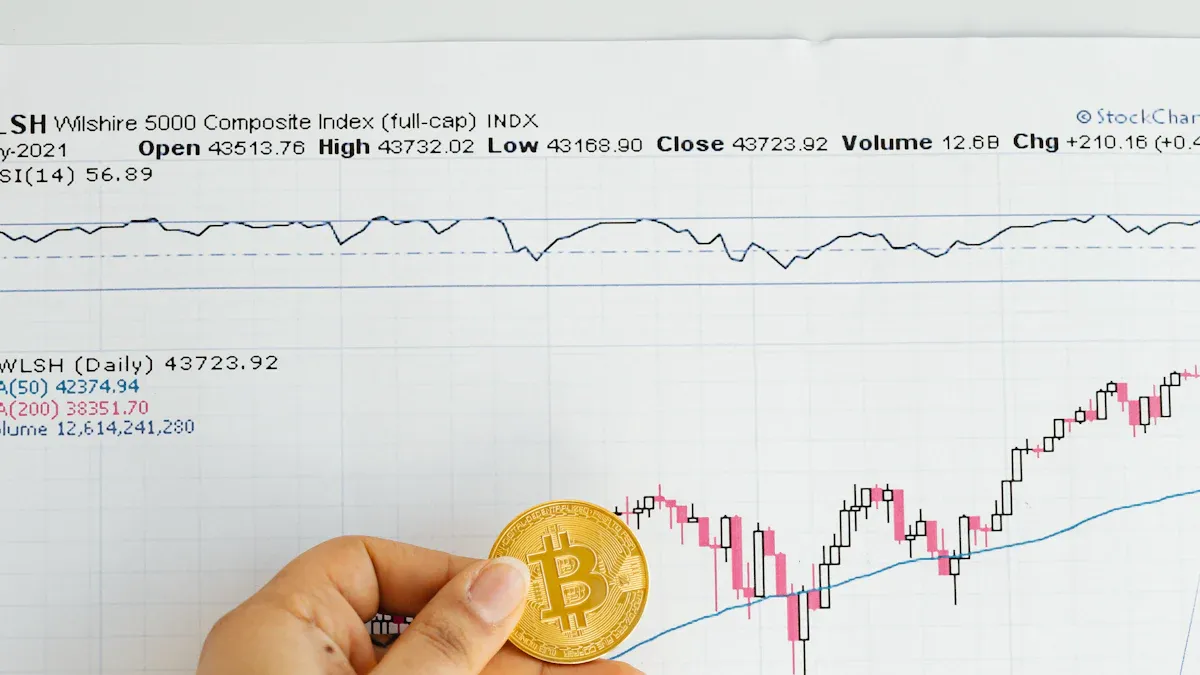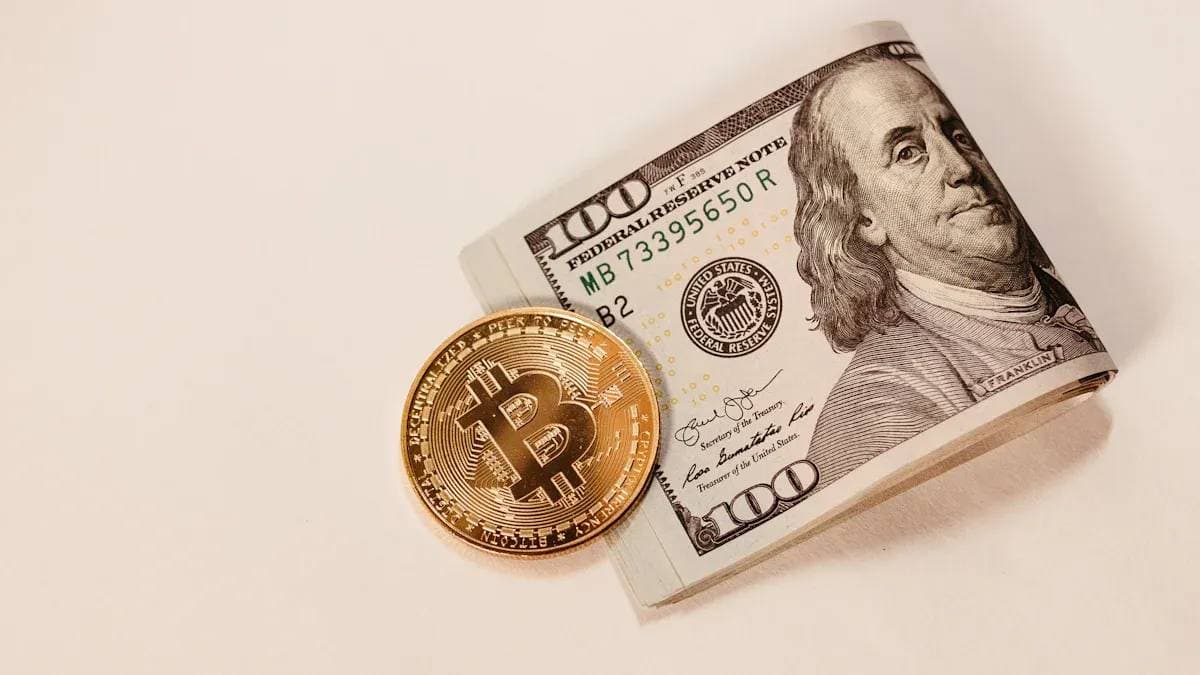- EasyCard
- Trade
- Help
- Announcement
- Academy
- SWIFT Code
- Iban Number
- Referral
- Customer Service
- Blog
- Creator
Introduction to Hong Kong ADR Trading: Learn to Invest from Scratch

Image Source: unsplash
You may have heard of “What are Hong Kong ADRs?” but are unclear about their true meaning. Simply put, Hong Kong ADRs are depositary receipts of Hong Kong stocks listed on U.S. exchanges. You can trade the stocks of Hong Kong companies in the U.S. market through ADRs without directly participating in the Hong Kong stock market.
Choosing Hong Kong ADRs as an investment tool allows you to more conveniently diversify your investment portfolio and gain exposure to the fast-growing Asian market. These companies typically have international competitiveness and significant market potential, offering investors opportunities for long-term growth.
Key Points
- Hong Kong ADRs enable U.S. investors to trade stocks of Hong Kong companies in their local market without directly participating in the Hong Kong stock market.
- Investing in Hong Kong ADRs provides access to high-quality Hong Kong and Chinese companies and offers flexible trading hours.
- Understanding the differences between Hong Kong ADRs and direct trading of Hong Kong stocks can help you choose the most suitable investment method.
- Risks of investing in Hong Kong ADRs include price volatility and tax issues, which require careful management.
- Continuously learning about market dynamics and investment knowledge can enhance your investment capabilities and decision-making quality.
What Are Hong Kong ADRs?

Image Source: unsplash
Definition and Operation of ADRs
You may be wondering, what exactly are Hong Kong ADRs? Simply put, ADRs (American Depositary Receipts) are a financial instrument that allows U.S. investors to trade stocks of non-U.S. companies in their local market. Hong Kong ADRs specifically refer to depositary receipts issued in the U.S. market by Hong Kong-listed companies. These receipts are issued by U.S. depositary institutions and are backed by the stocks of Hong Kong companies.
Here’s how Hong Kong ADRs work:
- Issuance and Trading: Hong Kong companies deposit their stocks with a U.S. depositary institution, which then issues ADRs for U.S. investors to purchase.
- Trading Convenience: Investors can buy and sell Hong Kong ADRs like U.S. stocks without directly participating in the Hong Kong stock market.
- Conversion Ratio: Each ADR typically represents a certain number of underlying shares. For example, HSBC’s ADR has a conversion ratio of 1:5, while Meituan’s is 1:2. These ratios are determined by the issuance terms.
For example, U.S. investors can invest in Xiaomi through Hong Kong ADRs and trade them in the U.S. market. This not only provides opportunities for after-hours trading but also allows investors to manage their portfolios more flexibly.
Characteristics and Common Companies of Hong Kong ADRs
Hong Kong ADRs have several notable characteristics that make them a popular choice for investors:
- Internationalization: Hong Kong ADRs allow U.S. investors to access high-quality companies in the Hong Kong market, enabling globalized investing.
- Flexible Trading Hours: Due to the different trading hours of the U.S. market, investors can continue trading after the Hong Kong market closes.
- High Liquidity: Hong Kong ADRs are typically listed on major U.S. exchanges (such as the New York Stock Exchange or NASDAQ), offering high liquidity.
Some common Hong Kong ADR companies include:
- HSBC Holdings (HSBC): A globally renowned financial institution providing diversified financial services.
- Alibaba: China’s leading e-commerce and technology company.
- Meituan: A technology platform focused on local lifestyle services.
These companies not only perform strongly in the Hong Kong market but also attract significant attention from international investors.
Differences Between Hong Kong ADRs and Direct Trading of Hong Kong Stocks
There are clear differences between Hong Kong ADRs and directly trading Hong Kong stocks. Understanding these differences helps you choose the most suitable investment method:
- Trading Market: Hong Kong ADRs are traded in the U.S. market, while direct trading of Hong Kong stocks requires access to the Hong Kong Stock Exchange.
- Trading Currency: Hong Kong ADRs are priced in U.S. dollars, while Hong Kong stocks are priced in Hong Kong dollars. This means that Hong Kong ADR prices may be affected by exchange rate fluctuations.
- Trading Hours: Hong Kong ADR trading hours align with the U.S. stock market, catering to the time zone needs of U.S. investors.
- Tax Considerations: Investing in Hong Kong ADRs may involve U.S. tax regulations, while directly trading Hong Kong stocks requires consideration of Hong Kong’s tax policies.
For example, if you live in the U.S., Hong Kong ADRs may be more convenient because you can trade during U.S. market hours. However, if you already have a Hong Kong investment account, directly trading Hong Kong stocks may be more cost-effective.
Advantages and Risks of Investing in Hong Kong ADRs
Main Advantages of Investing in Hong Kong ADRs
Investing in Hong Kong ADRs offers several advantages, particularly the opportunity to further diversify your investment portfolio. First, Hong Kong ADRs allow you to access high-quality companies in the Chinese and Hong Kong markets without directly participating in the Hong Kong Stock Exchange. This provides significant convenience for U.S. investors looking to invest in the Asian market.
Second, the performance of Hong Kong ADRs is often correlated with trends in the Hong Kong market. For example, according to statistics, the Hang Seng Index rose by 19% in 2023, and the MSCI China Index recorded a 16% increase. These figures show that the potential returns of Hong Kong ADRs are closely tied to the growth of the Hong Kong market:
| Index | Year-to-Date Change |
|---|---|
| CSI 300 Index | -1.5% |
| Hang Seng Index | +19% |
| MSCI China Index | +16% |
Additionally, Hong Kong ADRs offer flexible trading hours, synchronized with the U.S. market. This allows you to continue trading after the Hong Kong market closes, enabling better capture of market opportunities.
Risks and Challenges to Note
While Hong Kong ADRs offer several advantages, you also need to understand the associated risks. First, the price of Hong Kong ADRs may be affected by fluctuations in the underlying stocks. If the Hong Kong market experiences significant volatility, ADR prices will also fluctuate accordingly.
Second, while Hong Kong ADRs generally have high liquidity, it may still be lower than that of U.S. domestic companies’ stocks. This could lead to wider bid-ask spreads during market volatility, increasing trading costs.
Finally, tax issues are a challenge. Investing in Hong Kong ADRs may involve both U.S. and Hong Kong tax regulations. You need to understand the relevant policies to avoid tax issues affecting your investment returns.
Impact of Exchange Rate Fluctuations on Hong Kong ADRs
Exchange rate fluctuations are a critical factor in Hong Kong ADR investments. Hong Kong ADRs are priced in U.S. dollars, but their underlying stocks are priced in Hong Kong dollars. When the exchange rate between the U.S. dollar and the Hong Kong dollar fluctuates, ADR prices may be affected. For example, a stronger U.S. dollar may lead to a decline in ADR prices, while a weaker U.S. dollar may push ADR prices higher.
Therefore, you need to closely monitor exchange rate trends, especially during periods of global economic instability. Exchange rate fluctuations not only affect investment returns but also increase investment uncertainty.
How to Trade Hong Kong ADRs

Image Source: pexels
Opening a Suitable Investment Account
To start trading Hong Kong ADRs, the first step is to open a suitable investment account. You need to choose a broker that offers Hong Kong ADR trading services. Major U.S. brokers, such as Charles Schwab, Fidelity, or Interactive Brokers, typically support Hong Kong ADR trading. When choosing a broker, consider the following factors:
- Trading Fees: Compare the commissions and other fees of different brokers to select the most suitable option for your needs.
- Trading Platform Features: Ensure the platform provides real-time quotes, technical analysis tools, and market data to help you make informed investment decisions.
- International Market Support: Confirm whether the broker supports trading in multiple markets to facilitate future expansion of your investment portfolio.
The account opening process typically involves submitting identification documents, filling out application forms, and depositing initial funds. Once these steps are completed, you can start using the account to trade Hong Kong ADRs.
Trading Tools and Platforms
Choosing the right trading tools and platforms is key to successfully investing in Hong Kong ADRs. Most brokers’ trading platforms include the following features:
- Real-Time Market Data: Helps you track price changes and trading volumes of Hong Kong ADRs.
- Technical Analysis Tools: Such as candlestick charts, moving averages, and the Relative Strength Index (RSI) for analyzing market trends.
- Automated Trading Features: Set stop-loss or limit orders to reduce the risks of manual operations.
Additionally, you can use third-party financial tools, such as Yahoo Finance or TradingView, to further analyze the performance of Hong Kong ADRs. These tools typically provide more detailed charts and data, helping you develop more precise investment strategies.
Basic Steps for Trading Hong Kong ADRs
After opening an account and becoming familiar with the trading platform, you can start trading Hong Kong ADRs. Here are the basic steps:
- Select Target ADR: Choose a suitable Hong Kong ADR based on your investment goals and risk tolerance. For example, if you are optimistic about the tech industry, consider ADRs for Alibaba or Meituan.
- Analyze Market Data: Use the tools provided by the trading platform to analyze the historical price trends and market conditions of the ADR.
- Place a Trade: Enter the ADR code, purchase quantity, and price type (market order or limit order) on the trading platform, then confirm the trade.
- Monitor Investment Performance: After completing the trade, regularly check the ADR’s performance and adjust your investment strategy based on market changes.
For example, suppose you want to invest in HSBC Holdings’ ADR. You can enter the code “HSBC” on the trading platform, view real-time prices, and decide to buy 10 shares with a market order. After the trade is completed, you can check your holdings in the account and set price alerts to stay updated on market dynamics.
Tip: During the trading process, closely monitor exchange rate fluctuations, as they may directly affect the prices of Hong Kong ADRs.
Trading Hours and Impact of Market Volatility
The trading hours and market volatility of Hong Kong ADRs are closely related. Understanding these factors can help you manage investment risks more effectively and seize market opportunities.
Characteristics of Trading Hours
Hong Kong ADR trading hours align with the U.S. stock market, typically divided into the following phases:
- Pre-Market Trading: 4:00 AM to 9:30 AM Eastern Time, suitable for early positioning or responding to breaking news.
- Regular Trading Hours: 9:30 AM to 4:00 PM, with the highest market liquidity and most active trading.
- After-Hours Trading: 4:00 PM to 8:00 PM, suitable for adjusting positions or observing market reactions.
These time periods offer flexible trading options. For example, after the Hong Kong market closes, you can still use U.S. market hours to trade based on the latest international news.
Tip: During pre-market or after-hours trading, liquidity may be lower, and bid-ask spreads may widen. Use limit orders during these periods to control trading costs.
Impact of Market Volatility
Market volatility significantly affects the prices of Hong Kong ADRs. Here are some key factors:
- Hong Kong Market Trends: The prices of Hong Kong ADRs are typically closely tied to the performance of their underlying stocks. For example, if the Hang Seng Index rises sharply in the Hong Kong market, related ADR prices may also increase in the U.S. market.
- International Economic News: U.S. economic data, announced interest rate policies, or geopolitical events may trigger market volatility, affecting Hong Kong ADR prices.
- Exchange Rate Fluctuations: Changes in the USD/HKD exchange rate directly impact the value of Hong Kong ADRs. For instance, a stronger U.S. dollar may depress ADR prices.
How to Handle Market Volatility
Dealing with market volatility requires strategy and patience. Here are some practical suggestions:
- Diversify Investments: Avoid concentrating funds in a single ADR; choose ADRs from multiple industries or companies to spread risk.
- Set Stop-Loss Orders: Set stop-loss prices on the trading platform to reduce losses caused by market volatility.
- Monitor Market Dynamics: Regularly review international news and economic data to anticipate potential market fluctuations.
For example, suppose you invest in Alibaba’s ADR. If China announces strong economic growth data, it may drive Alibaba’s stock price higher. You can capitalize on this news by trading during the U.S. market’s regular hours to achieve higher investment returns.
Data Insight: According to 2023 market data, the average daily volatility of Hong Kong ADRs was about 2.5%. This indicates that market volatility may offer short-term trading opportunities but requires careful risk management.
In summary, understanding the characteristics of trading hours and market volatility can help you better grasp the rhythm of Hong Kong ADR investments. By flexibly applying trading strategies, you can find stable investment opportunities in volatile markets.
Practical Tips for Beginners Investing in Hong Kong ADRs
How to Choose Suitable Hong Kong ADRs
When selecting Hong Kong ADRs, consider the company’s industry, financial performance, and market potential. Here are some practical guidelines:
- Industry Analysis: Choose industries you are familiar with or optimistic about, such as Alibaba or Meituan in the tech sector or HSBC Holdings in finance.
- Financial Stability: Review the company’s financial statements to understand revenue growth, profitability, and debt levels. Stable finances can reduce investment risks.
- Market Potential: Select companies with international competitiveness, such as those with a large user base in the Chinese market. These companies typically have long-term growth potential.
Tip: Use the analysis tools provided by trading platforms, such as technical indicators and historical data, to gain a more comprehensive understanding of ADR performance.
Developing Investment Strategies and Risk Management
Successful investing requires clear strategies and effective risk management. Here are some steps:
- Set Goals: Define your investment goals, such as short-term gains or long-term growth.
- Diversify Investments: Avoid concentrating funds in a single ADR; choose ADRs from multiple industries to spread risk.
- Set Stop-Loss Orders: Set stop-loss prices on the trading platform to reduce losses caused by market volatility.
- Regularly Review: Periodically check investment performance and adjust strategies based on market changes.
For example, if you invest in Alibaba’s ADR, set a stop-loss price at USD 80. If the price drops to this level, the system will automatically sell, helping you control losses.
Data Insight: According to market data, diversified portfolios can reduce risk by an average of 20%.
Continuous Learning and Monitoring Market Dynamics
Investing in Hong Kong ADRs requires continuous learning and monitoring of market dynamics. Here are some suggestions:
- Read Financial News: Regularly review financial news from Hong Kong and the U.S. to understand factors affecting ADR prices, such as exchange rate fluctuations or policy changes.
- Take Investment Courses: Enroll in online or offline investment courses to learn more about technical analysis and market trends.
- Use Financial Tools: Utilize tools like Yahoo Finance or TradingView to track ADR price trends and technical indicators.
Learning Tip: Spend 15 minutes daily reading market reports; accumulating knowledge over time can help you make wiser investment decisions.
By following these suggestions, you can gradually improve your ability to invest in Hong Kong ADRs and find stable growth opportunities in the market.
The core aspects of investing in Hong Kong ADRs include flexible trading hours, access to high-quality Hong Kong companies, and opportunities to diversify portfolios. You need to understand their advantages and risks and master the basic trading steps.
Tip: Starting with small investments can help you build experience gradually and reduce initial risks.
Continuous learning of market dynamics and investment knowledge is crucial. You can improve your skills by reading financial news or taking courses. At the same time, maintaining a rational investment mindset and avoiding impulsive decisions due to market volatility will help you achieve stable returns in the long term.
FAQ
1. Are the trading fees for Hong Kong ADRs high?
The trading fees for Hong Kong ADRs depend on the broker’s fee structure. They generally include commissions, platform fees, and exchange rate conversion fees. Choosing a low-fee broker can help reduce costs.
Tip: Compare the fee structures of different brokers to select the most suitable option for your needs.
2. Do I need to pay dividend taxes?
Yes, dividends from Hong Kong ADRs may be subject to U.S. withholding tax, typically at a rate of 30%. Some countries have tax treaties with the U.S., which may lower the tax rate.
Note: Check the tax treaty between your tax residency and the U.S. to understand the applicable tax rate.
3. How is the liquidity of Hong Kong ADRs?
Hong Kong ADRs generally have high liquidity, especially those listed on the New York Stock Exchange or NASDAQ. However, liquidity may be lower than that of U.S. domestic stocks.
Suggestion: Choose ADRs with higher trading volumes to reduce the impact of bid-ask spread widening due to low liquidity.
4. How much do exchange rate fluctuations affect investments?
Exchange rate fluctuations directly affect the prices of Hong Kong ADRs. A stronger U.S. dollar may depress ADR prices, while a weaker dollar may push prices higher.
Data Insight: According to 2023 data, the USD/HKD exchange rate fluctuated by about 0.5%, significantly impacting ADR prices.
5. Are Hong Kong ADRs suitable for long-term or short-term investments?
Hong Kong ADRs are suitable for both long-term and short-term investors. Long-term investors can benefit from company growth, while short-term investors can capitalize on market volatility for profits.
Suggestion: Choose an investment strategy based on your goals and risk tolerance.
Trading Hong Kong ADRs offers beginners a convenient way to access the Hong Kong market, and efficient fund management with low-cost tools can help you seize investment opportunities. BiyaPay provides a seamless financial solution, enabling trading in U.S. and Hong Kong ADRs without offshore accounts, allowing you to participate in the market cost-effectively, whether capitalizing on market fluctuations through high-frequency trading or pursuing long-term growth with Hong Kong companies.
It supports USD, HKD, and 30+ fiat and digital currencies with real-time exchange rate transparency, helping you manage currency fluctuations and optimize trading costs. With remittance fees as low as 0.5% across 190+ countries, it ensures flexible fund allocation to meet ADR trading needs. A flexible 5.48% annualized yield savings product with no lock-in period allows idle funds to grow during trading gaps, enhancing overall returns. Sign up for BiyaPay today to combine the advantages of Hong Kong ADR trading with BiyaPay’s low-cost financial tools for a rewarding global investment journey!
*This article is provided for general information purposes and does not constitute legal, tax or other professional advice from BiyaPay or its subsidiaries and its affiliates, and it is not intended as a substitute for obtaining advice from a financial advisor or any other professional.
We make no representations, warranties or warranties, express or implied, as to the accuracy, completeness or timeliness of the contents of this publication.




Contact Us
Company and Team
BiyaPay Products
Customer Services
is a broker-dealer registered with the U.S. Securities and Exchange Commission (SEC) (No.: 802-127417), member of the Financial Industry Regulatory Authority (FINRA) (CRD: 325027), member of the Securities Investor Protection Corporation (SIPC), and regulated by FINRA and SEC.
registered with the US Financial Crimes Enforcement Network (FinCEN), as a Money Services Business (MSB), registration number: 31000218637349, and regulated by FinCEN.
registered as Financial Service Provider (FSP number: FSP1007221) in New Zealand, and is a member of the Financial Dispute Resolution Scheme, a New Zealand independent dispute resolution service provider.




















